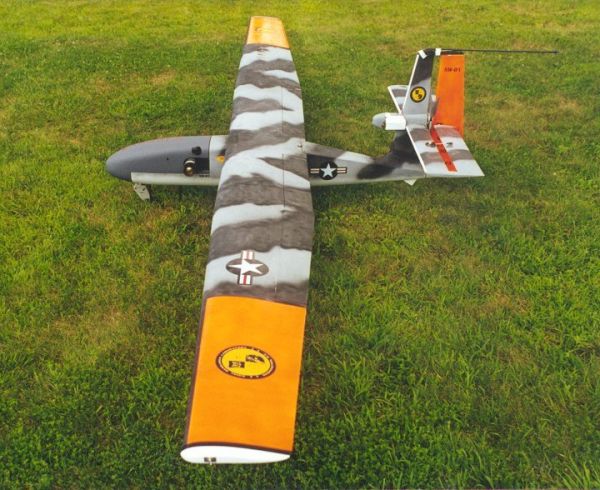Naval Research Lab Swallow
The Naval Research Laboratory's Swallow UAV program originated from a DARPA program to develop a chemical/biological agent detection payload. This sensor was first demonstrated on an NRL/BAI Telemaster UAV in January 1996. The NRL then designed and built the Swallow vehicle for further tests of this and other advanced sensors for mini-UAVs. Two Swallow UAVs were built, and the first flight occurred in September 1996.
The Swallow is of conventional layout, and is powered by an electric motor which drives a five-blade tractor propeller mounted on the vertical tail. It is fitted with a fixed tricycle landing gear, so that it can take off and land on conventional runways. Catapult launch and/or parachute recovery is also possible. The UAV is equipped with a two-way satcom datalink for remote guidance and control, and an additional UHF/VHF data downlink. Maximum payload weight of the UAV is 4.5 kg (10 lb) and it has an endurance of 15 minutes. It was planned to eventually upgrade the Swallow with lithium batteries instead of the original Ni/Cd ones to increase the endurance to two hours, and to add a GPS-based navigation system for fully autonomous missions. However, it is not clear which of these upgrades were ever actually installed. The Swallow's mission equipment for the NRL's original test series was a nose-mounted fibre-optic biosensor (air sampler + fluidics unit).
 |
| Photo: Maryland Advanced Development Laboratory |
| Swallow |
During 1998, a Swallow UAV was used in a program of the Maryland Advanced Development Laboratory to develop and test the "Viper" automatic sniper detection system. This consisted of visual and infrared video cameras, and a computer algorithm which was designed to detect and locate the muzzle flash of sniper rifles.
Specifications
Data for Swallow:
| Length | 1.8 m (6 ft) |
| Wingspan | 4.6 m (15 ft) |
| Height | 66 cm (26 in) |
| Weight | 28 kg (62 lb) |
| Speed | 111 km/h (69 mph) |
| Ceiling | 9100 m (30000 ft) |
| Endurance | 15 min |
| Propulsion | Aveox electric motor; 1.5 kW |
Main Sources
[1] Kenneth Munson (ed.): "Jane's Unmanned Aerial Vehicles and Targets, Issue 15", Jane's, 2000
[2] S. A. Moroz et. al.: "Airborne Deployment of and Recent Improvements to the
Viper Counter Sniper System", March 1999
Back to Directory of U.S. Military Rockets and Missiles, Appendix 4
Last Updated: 26 May 2004